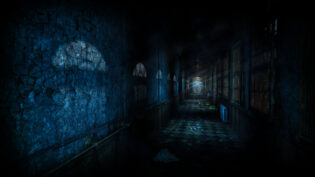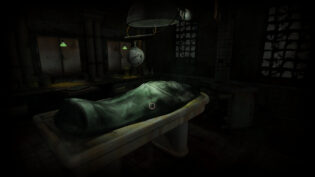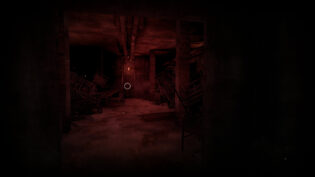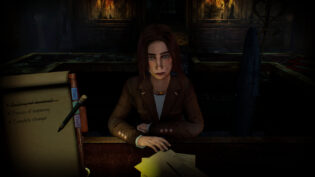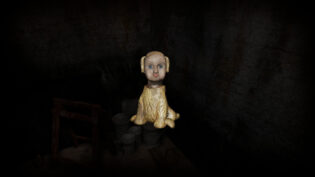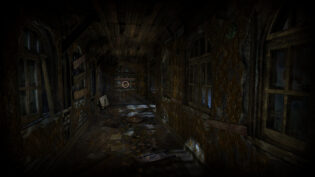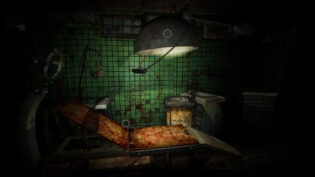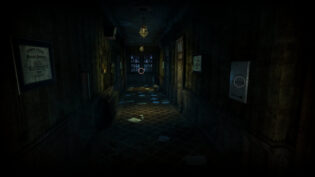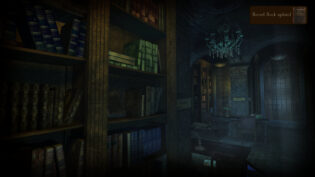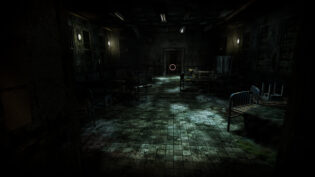Back in 2006 a very small team from Argentina created a moody horror themed first person view point and click adventure with pre-rendered backgrounds called Scratches. And while it became a surprise hit, after releasing a Director’s Cut of the game the following year, the original team ceased to be soon after. Then, in 2010 lead programmer and designer of Scratches Agustín Cordes announced that their new studio was making ASYLUM. Almost 15 years of development later, it’s a released game one can play. Which I immediately did and enjoyed my time with it quite a bit.
The story premise is simple enough – the main character, for reasons not fully understood by him, drives back to the mental institution he previously stayed in to find information on what exactly happened there. The titular asylum has been closed a while ago and is meant to be abandoned, so his hopes are to just search through the old documents and fill in the blanks in his own memory. To his surprise, the place isn’t empty – it’s in the early stages of being reopened, and due to that has some staff and patients in it, complicating the investigation. Over the course of several hours, that serve as “chapters” of sorts, you will be learning more about what happened in that place and solving problems that block your investigation.
What’s very nice is that there’s rarely a reason for the main character to just grab a random junk item into inventory or need to think as an “adventure game protagonist” rather than a normal human being trying to get what they want. And while there is a certain level on non-linearity, it’s never about finding random junk and trying to apply it random pieces of scenery, solving things you don’t even know you need to solve too. Vast majority of problems to solve are very well made, story is told mostly via documents you find along the way or from talking to the few characters you meet along the way. And the atmosphere is built nicely, with wonderfully paced sequences that build and relieve tension.
That said, the overall storytelling does falter closer to the end and completely misses the tone on the ending. Several of the very late game problem solving sequences start feeling like they’re there just to be there, rather than flowing nicely as they did up until that point. And as you will be exploring and investigating a lot, you will from time to time stumble upon very poorly handled easter eggs and references, that destroy the atmosphere. They’re so bad, I’d honestly wish they could be toggled off if not cut from the game entirely. Nonetheless, at least the game avoids repeating horrid unintuitive pixel hunting puzzles that made Scratches far less enjoyable. Although, while Scratches did get a better soundtrack of the two, in my opinion, even if ASYLUM still nails the overall sound design.
And speaking of it, when I’ve revisited Scratches around 7 years ago, I had to put things into perspective about why Scratches was released at the “right time”. The way Scratches (and ASYLUM) control, where you’re exploring the game almost as if in an FPS game, but in a very limited manner, always felt awkward and artificial. Which could be excused in the early 90s, when they could also bring the visual fidelity not achievable with real time 3D and direct controls. But right after Scratches released we’ve had Penumbra tech demo and Overture, Portal, Dear Esther – all of which have shown that it’s not just possible but perhaps preferable to build first person adventure games with FPS-like controls. And by now, we’ve seen the remakes of Myst and Riven, which I would argue play objectively better than the originals for that same reason. So is there a place for a game like ASYLUM in the modern market?
I would say yes. It does feel quaint and also obvious that the choice to make the game work this way is more due to the budget and design limitations, rather than technological limitations. Yet what matters is that while limited and sometimes frustrating, the game controls very well and the developers spent a lot of time making sure that your exploration feels “just right”. The transitions are nicely done, the way camera follows the mouse is good and I think even people who’s never had experience with these types of games before will have an easy time adjusting and “getting” it.
ASYLUM is a title that could’ve felt outdated, could’ve stopped existing somewhere between its announcement and today or could’ve just been not very interesting. But it is interesting and it does play well. Yes, I wish it wasn’t the type of game that just starts and you have to view the intro before you get to the menus. Yes, the ending is weak. Yes the characters look like talking heads from Fallout 2. Yes, there are visual inconsistencies between different pre-rendered elements and bugs that are already being gradually fixed. But it is a game worth playing. And I was very happy to have finally played it.


